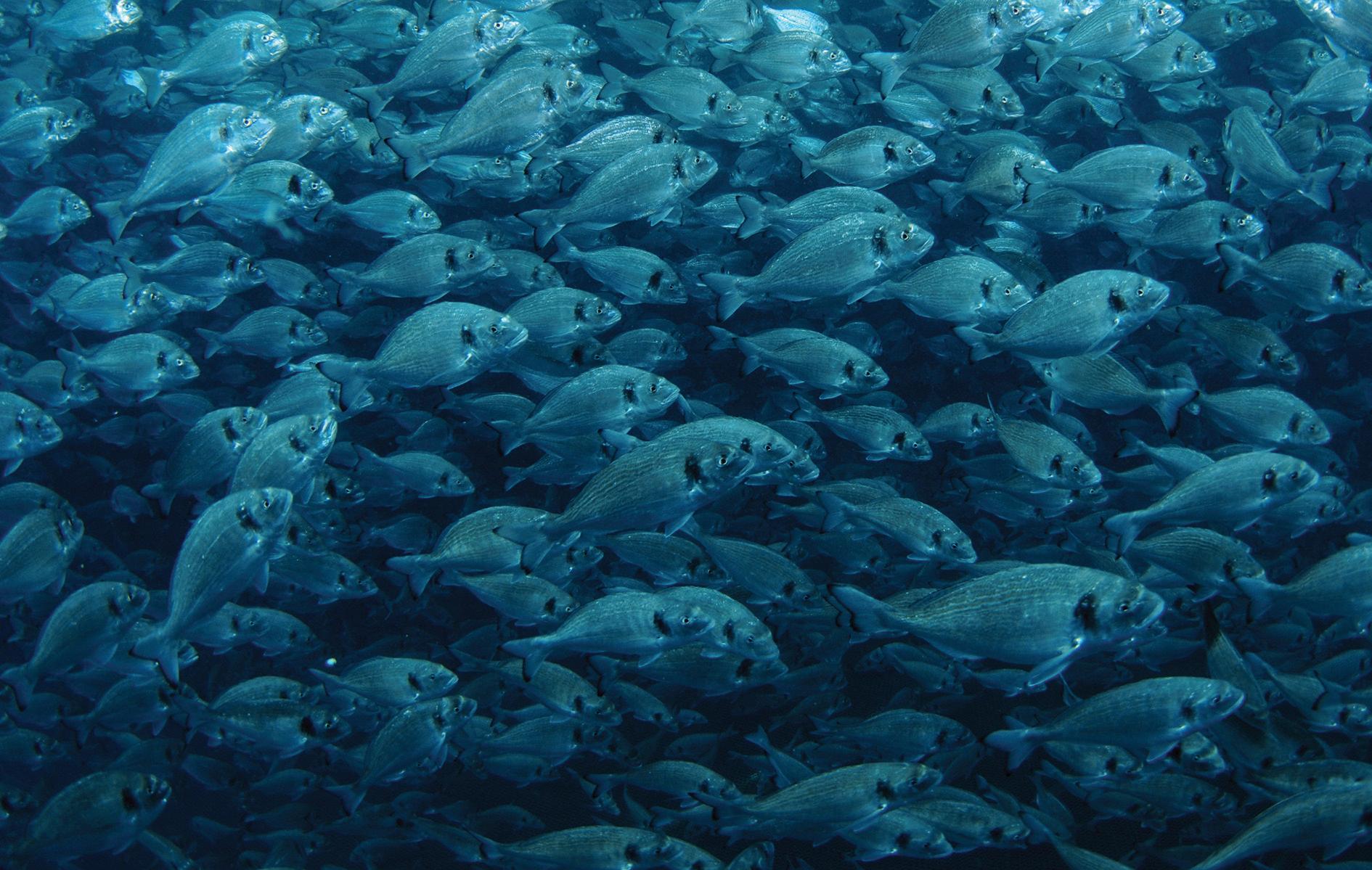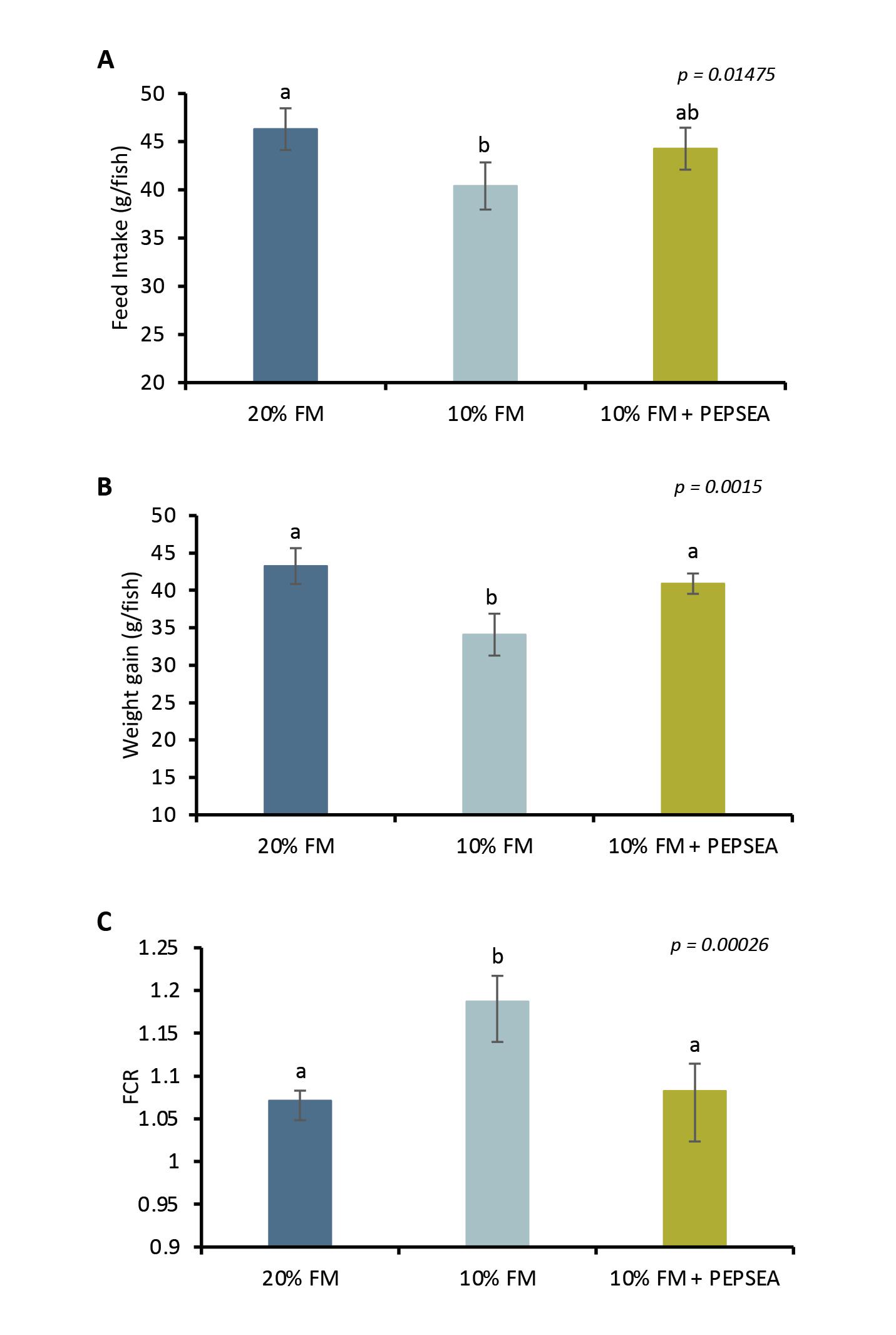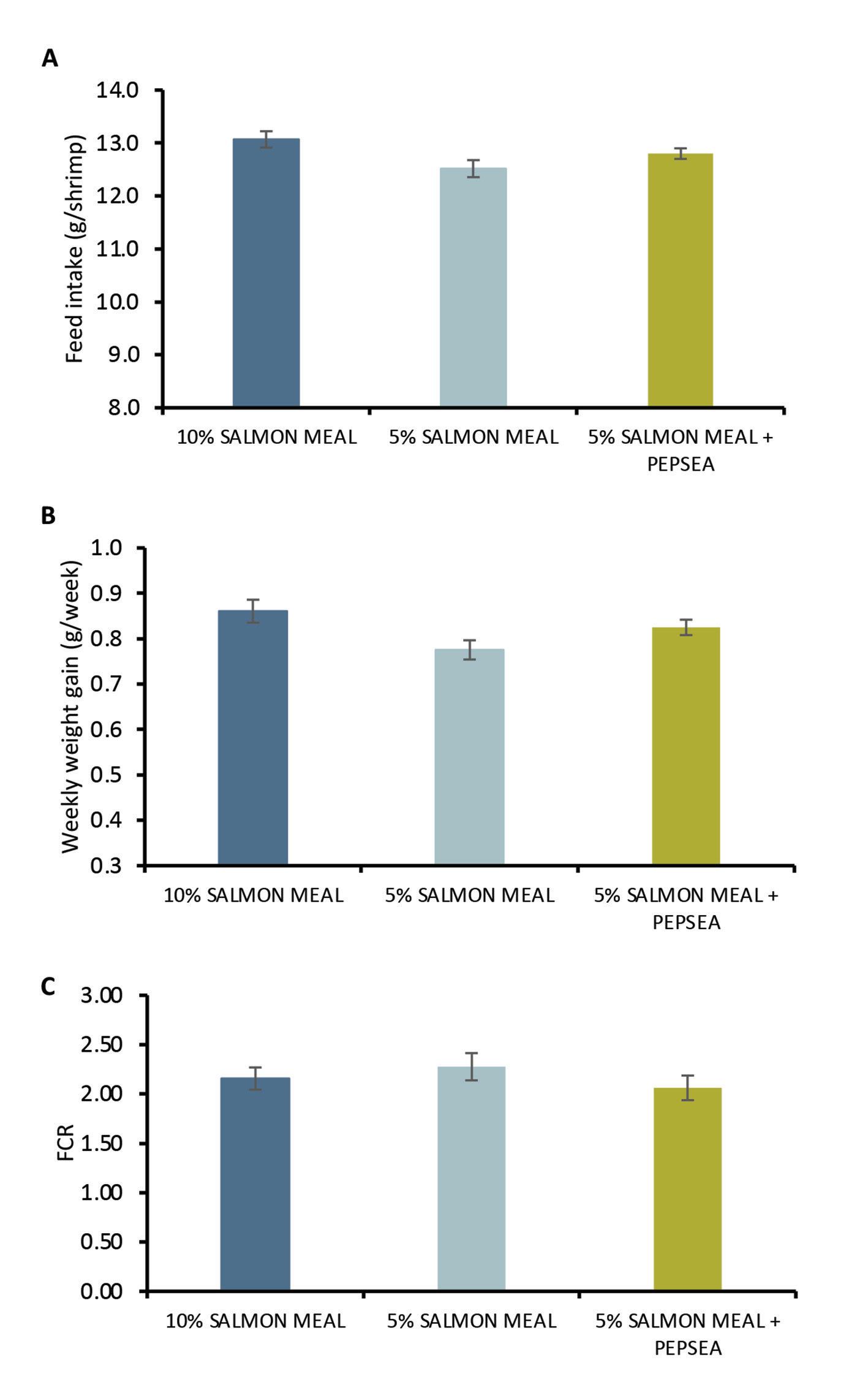
7 minute read
Shrimp peptide concentrate boosts palatability and
Shrimp peptide concentrate boosts palatability and growth performance in fish and shrimp
Waldo G. Nuez-Ortín, Marleen Dehasque, Adisseo
The continuous decrease of fishmeal (FM) in aquafeed formulations for economic and sustainability reasons implies attention to other formulative aspects, such as compensating for essential nutrients and maintaining feed palatability.
Feed palatability, or attractability, affects the growth of fish and shrimp and is considered an indicator of feed quality by farmers. Since feed palatability will influence feed intake, it will also impact the environmental and culture conditions of the farm. Moreover, farmed animals face stressful periods (i.e. transfer to ponds or cages, cold stress, poor water quality, veterinary treatments, etc.) that negatively affect feed intake. Neutralizing these periods by stimulating feed intake is important to achieve homogeneous performance and health.
Palatability enhancers and attractants bring flexibility to the nutritionist in the use of alternative and local ingredients and standardize feed palatability regardless of the quality of other dietary ingredients. Although marine meals, such as krill and squid meal, have been traditionally used to improve feed palatability, their inclusion in aquafeeds is limited nowadays by availability, consistency, price and sustainability issues. In contrast, the use of a palatability enhancer derived from marine or aquaculture byproducts offers a more cost-effective solution besides positively impacting the FIFO ratio. Improved palatability of aquafeeds based on locally available ingredients and with limited inclusion of imported marine ingredients is the way forward for carbon footprint reduction and sustainability.
PEPSEA by Adisseo is a peptide concentrate derived from shrimp byproducts via enzymatic hydrolysis. A controlled hydrolysis process allows the high release of diverse bioactive peptides from native proteins, as well as a high product consistency from batch to batch. The molecular mass distribution of PEPSEA shows that over 85% of total peptides and free amino acids fall below 1000 Da. Low molecular weight fractions are more water soluble and, therefore, more effective in stimulating the chemo-sensory mechanism of fish and shrimp and boosting palatability performance. The use of PEPSEA in fish and shrimp feeds is approved by EU regulations and meets the requirements of leading certification programs. PEPSEA is presented in liquid form and application can be either in the mixer or top-coating.
Boosting intake and growth performance of marine fish in the context of fishmeal reduction
A study was conducted in gilthead seabream to evaluate PEPSEA in terms of feed intake and growth performance. Fish of 11.4 ± 0.5 g were randomly divided into 12 x 150 L tanks at an initial density of 30 animals per tank. A total of three isoproteic and isolipidic diets were tested which included (1) a positive control
Figure 1. Feed intake (A), weight gain (B) and feed conversion rate (C) of gilthead seabream (11-65 g) fed high fishmeal (FM; 20%), low FM and low FM with the inclusion of PEPSEA. Statistical analysis by one way ANOVA and Tukey´s post hoc test (n = 4, mean ± std; p < 0.05). Different letters indicate statistical difference.
diet containing 20% FM, (2) a negative control diet containing 10% FM, and (3) a treatment diet containing 10% FM and PEPSEA. The shrimp peptide concentrate was included at a rate to supply 1% of functional soluble protein and replace the soluble protein in 10% fishmeal. Adjustments of other major ingredients and supplements such as soy protein concentrate, wheat meal, methionine and monocalcium phosphate, were made to balance nutrient levels across experimental feeds. Each tank received the ration according to its biomass and a fixed percentage was applied to all the tanks. The duration of the feeding trial was 84 days.
Results showed that total feed intake was significantly reduced by 13% in the 10% FM in relation to the 20% FM (Fig. 1A). However, the use of the shrimp peptide concentrate in the 10% FM numerically boosted feed intake by 10%. This was also reflected in weight gain. It was 21% significantly lower in the 10% FM as compared with 20% FM, while it was significantly improved by 20% in the 10% FM with the inclusion of PEP® SEA (Fig. 1B). Likewise, and in terms of FCR, the shrimp peptide concentrate significantly compensated the negative impact of FM reduction achieving an FCR value similar to that of the 20% FM (Fig. 1C).
These positive effects of PEPSEA on intake can be attributed to the chemosensory stimulation by low molecular weight peptides and amino acids. Additionally, low molecular weight peptides are more easily absorbed and assimilated by the gastrointestinal tract, acting as growth and health promoters (Siddik et al., 2020). Indeed, the addition of the shrimp peptide concentrate to 10% FM also proved to improve hindgut villi development resulting in morphometric values closer to 20% FM. This is particularly relevant for gilthead seabream, since the hindgut is the most sensitive intestinal section to inflammation and enterocyte degeneration and thus such morphometric improvements contribute to maximizing nutrient absorption and supporting fish in coping with production conditions.

Improving cost-efficiency, intake and growth performance of shrimp feeds
A study was conducted in whiteleg shrimp to evaluate the benefits of PEPSEA in feed intake and performance. Whiteleg shrimp of 1.2 ± 0.15 g were randomly divided into 15 outdoor tanks of 1.5m3 at an initial density of 153 shrimp per tank. In order to mimic production conditions, the trial was conducted in green water subjected to natural fluctuations in temperature and light. Three types of experimental feeds were formulated to be isoproteic and isolipidic and included (1) a positive control containing 10% salmon meal, (2) a negative control containing 5% salmon meal, and (3) a treatment diet containing 5% salmon meal and PEPSEA. The shrimp peptide concentrate was included at a rate to supply 0.5% of functional soluble protein, replacing the functional protein of 5% salmon meal. Feeds were also balanced for protein, amino acids and energy using
Figure 2. Feed intake (A), weekly weight gain (B) and feed conversion rate (C) of whiteleg shrimp (1-10 g) fed high salmon meal (10%), low salmon meal (5%) and low salmon meal (5%) with the inclusion of PEPSEA. Statistical analysis by one way ANOVA (n = 5, mean ± std; p < 0.05). No significant differences were found.
soy protein concentrate, cassava starch, and crystalline amino acids. Feed water stability was above 80% for all feeds. Mean shrimp body weight in each tank was determined on a weekly basis, and feed rations were adjusted on a daily basis. The duration of the feeding trial was 69 days.
Results showed that apparent feed intake was numerically reduced by 4% with the reduction of salmon meal from 10% to 5%, but compensated by the inclusion of PEPSEA (Fig. 2A). Salmon meal reduction had a numerically negative impact on the weekly gain weight and FCR of 10% and 6%, respectively (Fig. 2B, 2C). Likewise, the inclusion of the shrimp peptide concentrate numerically compensated weekly gain and FCR by 6% and 9%, respectively. Given the cost efficiency of PEPSEA inclusion in the present feed formulations, these results prove the potential of the low molecular weight fractions to stimulate the feeding behavior of shrimp and optimize commercial feed formulas.
It must be added that the trial was conducted during the dry season, implying high salinity concentrations and low temperatures (i.e. average of 35 g/L and 25°C) of the rearing water. Such conditions increase the energy demands of shrimp and explain the weight gains below 1 g per week and the FCR above 2. At the same time, these results reflect better the potential of the shrimp peptide concentrate in boosting feed intake and performance under natural production conditions.

Conclusions
Feed palatability, or attractability, is a key indicator of feed quality. PEPSEA is a concentrated source of bio-active shrimp peptides that brings flexibility to the nutritionist to reduce dependence on marine ingredients while maintaining palatability, intake and performance of fish and shrimp feeds. Unlike other palatability enhancers or attractants of marine origin, PEPSEA is allowed by leading certification programs and ensures availability, consistency and cost-efficiency. The Service Platform on Aquaculture Nutrition at Adisseo provides nutritional advice to optimize the application of PEPSEA in feed formulations for fish and shrimp.
More information: Waldo G. Nuez-Ortín
Lead Scientist Aquaculture Adisseo E: waldo.nuezortin@adisseo.com
Marleen Dehasque
Global Product Manager Aqua Nutrition Adisseo










